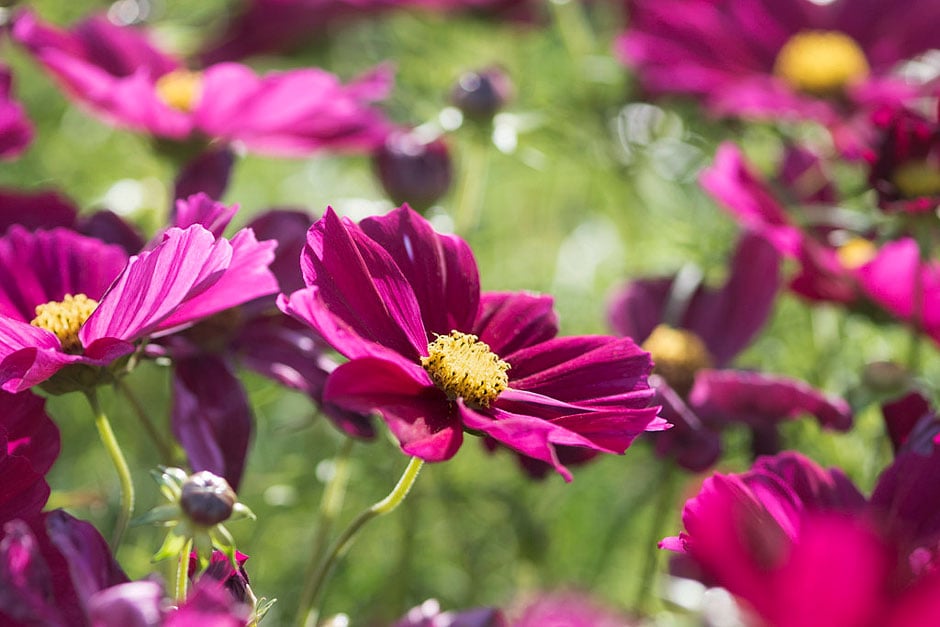Schools in lockdown
During the first lockdown different schools across the country used the time to engage children with nature, plants and growing your own
From bug hunts to potato patches – and simply spaces to forget the worries of the world if for only a moment – the value of outdoor spaces around schools for both mental and physical health has never been in sharper focus. Here we look at how four schools have got children gardening in this most challenging of years, and explore the benefits it has brought. If you'd like to find out how to create a similar project, please visit the RHS Campaign for School Gardening website.
Heron Hill School, Kendal
The children at Heron Hill School in Kendal took the idea of plants for pollinators one step further as well as keeping bees. It is the brainchild of Jacqui Cottam, the Chair of Governors and Year 5 teacher, Karen Harper, (both enthusiastic and knowledgeable bee keepers) who started a ‘Bee Team’, for 8-11-year olds, to make the children more aware of the importance of pollinators.
After the first lockdown in spring, many of the key workers’ children who came into school were worried about their parents, particularly those who nursed Covid-19 patients in local hospitals.
Happy distractions
There was also time for the children to just be themselves. Some lay on their backs finding pictures in the clouds or made dens out of branches and bracken the woodland. Out in the garden, they could just enjoy their moments of mindfulness and the happiness of being free.
Torridon Primary School, London
The school garden at Torridon Primary, an inner London Community School, features raised planters for vegetables, a wildlife corridor filled with native species and a wildlife garden which is home to lots of minibeasts. It is a safe haven for both nature and children. “I always feel calm when I’m in the garden” – is typical of the way children the feel about their space.
Care in the community
Before lockdown, the children grew potatoes; “We kept a few to cook and taste – it’s amazing how many children don’t like potato – but love chips” said teacher, Dorothy Hallam. Potatoes that were left over were advertised on the local residents’ Facebook page, then distributed around the neighbourhood. Those that were harvested at school were used in maths lessons, then the children decided that they should be added to the care boxes for families who were struggling to cope at home, along with food and toys they collected.
When lockdown began, each class set up a blog page so the children could post what they were doing at home. Some were growing flowers and vegetables outdoors or herbs in the kitchen with their parents, others took the chance to share their worries and concerns with their friends. During lockdown, gardening really did make a difference.
Harris Primary Academy Beckenham, Kent
For some, lockdown turned out to be the ideal opportunity to turn a dream into reality. “The idea of a school allotment had been discussed for ages, we wanted the children could understand where food comes from, it was the perfect chance for everyone to work together to get the project moving” explained Outdoor Learning Coordinator Gemma Corben.
Plot to plate
The PTA raised money to buy materials and seeds; parents, staff and the wider community donated pots and seeds and raised beds were created by recycling a shed that had been wrecked in the storms earlier in the year. Everyone got stuck in after Easter, helping key workers’ children to clear the brambles and prepare the site.
Around 35 children aged 5-7, planted, dug, made scarecrows, measured rows for sowing, carried bags of
Donnington Wood Infant School and Nursery, Telford
The garden at Donnington Wood Infant School is divided into several areas, including a vegetable patch which is ‘work in progress’ and herb garden, flower borders, wildlife area and spaces for den building and climbing. A small pond and lots of stones are home to minibeasts and other wildlife.
Developing the garden
The children who attended school during lockdown continued to develop the garden, there was so much to do. They all worked together, supporting and helping each other as big, happy team, carrying soil, watering plants and creating decorations. Everyone had a say in what went where, creating a sense of ownership and belonging; it really was their garden – and they loved it.
To be environmentally friendly and reduce costs, all of the plants were grown from seeds or


